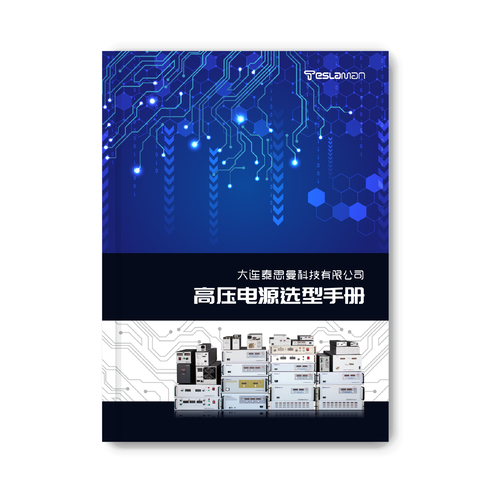Improving the Performance of High-Voltage Power Supplies for Semiconductor Testing: Current Situation, Challenges and Strategies
Abstract: This article explores in depth the relevant issues regarding the improvement of the performance of high-voltage power supplies for semiconductor testing from a professional perspective. Firstly, it introduces the importance and application scenarios of high-voltage power supplies for semiconductor testing. Subsequently, it analyzes the current performance challenges, including aspects such as precision, stability, and response speed. Finally, it elaborates in detail a series of effective strategies for improving performance, aiming to provide useful references and guidance for the technological development in the field of semiconductor testing.
I. Introduction
In today's booming semiconductor industry, the performance and quality testing of semiconductor devices are of crucial importance. As a key component of semiconductor testing equipment, the performance of high-voltage power supplies directly affects the accuracy and reliability of test results. With semiconductor technology constantly evolving towards smaller sizes, higher integration, and more complex functions, the performance requirements for high-voltage power supplies for testing are becoming increasingly stringent. Therefore, in-depth research on how to improve the performance of high-voltage power supplies for semiconductor testing has extremely important practical significance.
II. Application Scenarios of High-Voltage Power Supplies for Semiconductor Testing
Semiconductor testing covers multiple links in the chip manufacturing process, such as wafer testing and finished chip testing. In these tests, high-voltage power supplies are mainly used to provide specific high-voltage excitation signals for the devices under test to detect their electrical characteristics under high-voltage environments, such as breakdown voltage, leakage current, and withstand voltage capabilities. For example, in the testing of power semiconductor devices like insulated gate bipolar transistors (IGBTs) and metal-oxide-semiconductor field-effect transistors (MOSFETs), precise high-voltage power supplies are needed to simulate the actual high-voltage conditions in real work to ensure that the devices can operate normally and their performance meets the standards under high-voltage working conditions.
III. Current Challenges to the Performance of High-Voltage Power Supplies
(A) Precision Challenges
The electrical parameters of semiconductor devices are extremely sensitive to slight changes in voltage. During the testing process, precision errors in the output voltage of high-voltage power supplies may lead to significant deviations in test results, thus misjudging the performance of the devices. For example, for the testing of some high-precision analog chips, the voltage precision of high-voltage power supplies is required to reach one-thousandth or even higher. However, in practical applications, affected by various factors such as the characteristics of internal components of the power supply, temperature changes, and electromagnetic interference, it is quite challenging to achieve and maintain such high precision.
(B) Stability Challenges
The stability of the output voltage of high-voltage power supplies includes short-term stability and long-term stability. Poor short-term stability will cause voltage fluctuations in a short period, affecting the repeatability and accuracy of testing; poor long-term stability may lead to voltage drift during long-term testing, unable to ensure the consistency of test conditions. In some reliability tests, it may be necessary to apply a stable high voltage to semiconductor devices continuously for several hours or even days. Any factors causing voltage instability may interfere with the testing process and produce incorrect test conclusions.
(C) Response Speed Challenges
With the diversification of semiconductor testing requirements, there are increasing demands for the rapid response ability of the output voltage of high-voltage power supplies. For example, in some dynamic testing scenarios, high-voltage power supplies are required to be able to quickly change the output voltage according to testing instructions to simulate the voltage switching of semiconductor devices under different working states. However, due to limitations such as circuit structures and energy storage elements of traditional high-voltage power supplies, their response speeds are often difficult to meet the requirements of rapid dynamic testing, resulting in low testing efficiency and the inability to comprehensively and accurately evaluate the dynamic performance of the devices.
IV. Strategies for Improving the Performance of High-Voltage Power Supplies
(A) Optimizing Power Supply Circuit Design
Adopting advanced topological structures is an important way to improve the performance of high-voltage power supplies. For example, using a full-bridge resonant soft-switching circuit topology, compared with traditional hard-switching circuits, can effectively reduce switching losses and improve the conversion efficiency of the power supply, which is helpful for stabilizing the output voltage. Meanwhile, reasonably designing the feedback control circuit and using high-precision voltage sampling and error amplifiers can significantly improve the voltage control precision. For example, selecting low-noise, high-gain operational amplifiers as error amplifiers and combining them with precision resistor dividers for voltage sampling can control the voltage feedback precision within a very small range, thereby improving the precision of the output voltage.
(B) Adopting Advanced Control Algorithms
Digital control algorithms have shown great advantages in improving the performance of high-voltage power supplies. For example, using the digital proportional-integral-derivative (PID) algorithm, through real-time calculation and dynamic adjustment of voltage errors, precise control of the output voltage can be achieved. Moreover, the digital PID algorithm can conveniently adjust control parameters according to different testing requirements to adapt to the testing requirements of different semiconductor devices. In addition, the model predictive control (MPC) algorithm is also gradually being applied in the field of high-voltage power supply control. Based on the prediction and optimization of the power supply system model, the MPC algorithm can predict the changing trend of the output voltage in advance and make corresponding control decisions, effectively improving the response speed and stability of the power supply.
(C) Temperature Compensation and Electromagnetic Shielding
In view of the impact of temperature on the performance of high-voltage power supplies, it is crucial to adopt temperature compensation technology. By installing temperature sensors inside the power supply to monitor the temperature changes of key components in real time and adjusting circuit parameters such as reference voltage and amplification factor according to the preset temperature compensation curve, the impact of temperature changes on the precision and stability of the output voltage can be effectively reduced. Meanwhile, to reduce the impact of electromagnetic interference on the performance of high-voltage power supplies, a complete electromagnetic shielding design for the power supply is required. Using a metal shielding shell and reasonably arranging the internal circuits, such as separating the control circuit from the power circuit to reduce electromagnetic coupling, and adding electromagnetic filters at the input and output ends of the power supply to filter out external electromagnetic interference signals, ensuring that the high-voltage power supply can work stably and reliably in a complex electromagnetic environment.
(D) Modularization and Redundancy Design
Designing high-voltage power supplies in a modular structure has many advantages. Each module can be independently designed, tested, and optimized, which is convenient for maintenance and upgrading. In a high-voltage power supply system, adopting a redundant module design can improve the reliability of the system. When a certain module fails, the redundant module can quickly take over the work to ensure that the testing process is not affected. For example, in a multi-channel high-voltage power supply system, configuring redundant modules for each channel, once the main module of a certain channel fails, the redundant module will automatically switch to ensure the continuous and stable high-voltage output of that channel, thereby improving the reliability and stability of the entire semiconductor testing system.
V. Conclusion
The improvement of the performance of high-voltage power supplies for semiconductor testing is of inestimable importance for the development of the semiconductor industry. By deeply analyzing the current challenges such as precision, stability, and response speed, and adopting targeted strategies such as optimizing circuit design, using advanced control algorithms, temperature compensation and electromagnetic shielding, as well as modularization and redundancy design, the performance of high-voltage power supplies can be effectively improved. With the continuous progress of technology, it will be necessary to continuously explore new technologies and methods in the future to meet the growing high-performance requirements in the field of semiconductor testing and promote the semiconductor industry to move to a higher level.




















